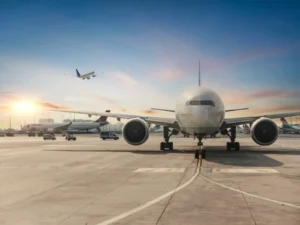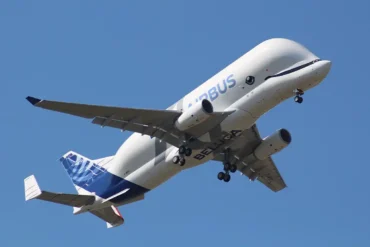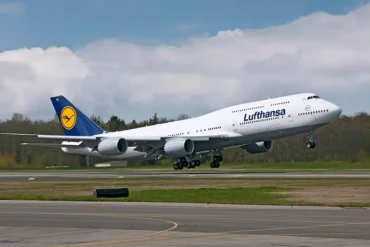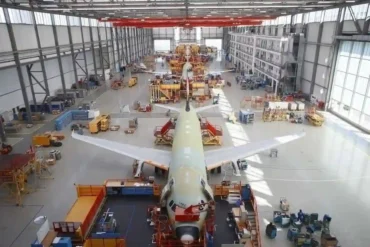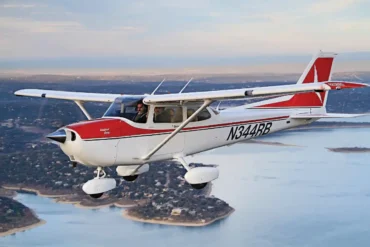Let’s chat about the airline industry. It’s a tough world out there, and making sure your fleet is running smoothly is key to keeping things efficient and profitable.
With more people flying and fuel costs going up, airlines need to be smart about how they manage their planes. They’ve got to keep customers happy while watching their bottom line.
This guide is here to help you do just that and stay ahead of the competition.
From planning which planes to buy to keeping them in tip-top shape and eventually retiring them, every step of an aircraft’s life needs careful attention to avoid wasting money and causing delays.
By using cool new tech and making decisions based on data, airlines can run things more smoothly, schedule flights better, and spend less on maintenance.
Plus, being eco-friendly and choosing the best routes can help airlines reduce their impact on the environment and hit their long-term green goals.
We’re diving into the best ways to do things, expert advice, and insights to help you unlock the power of great fleet management. This will set you up for better efficiency, performance, and profits in today’s competitive market.
This guide is packed with the knowledge and tools you need to make smart choices and pave the way for sustainable growth.
Let’s get started!
Why Good Fleet Management Matters in the Airline World
Managing your fleet well is super important for any airline. It’s all about planning, buying, maintaining, and retiring aircraft to make sure you’re using them in the best way possible and not spending too much.
When airlines take good care of their fleets, they can avoid problems, keep customers happy, and make more money.
Making Schedules Work Better
One big benefit of managing your fleet well is that you can make your flight schedules more accurate. Airlines need to plan their flights carefully to meet demand without having planes sit around or cause delays. By looking at data about passenger demand, past flight patterns, and possible problems, airlines can fine-tune their schedules to make more money and spend less.
Cutting Down on Maintenance Costs
Good fleet management also helps airlines spend less on maintenance. Regular check-ups and inspections are crucial to keep planes safe and reliable. By using proactive maintenance programs and new technologies, airlines can spot potential issues before they become big problems, which means fewer expensive repairs and less time with planes out of service.
Big Challenges in Managing Airline Fleets
While managing your fleet well has lots of benefits, it’s not without its challenges.
Fuel Prices Going Up and Down
One big challenge is that fuel prices can change a lot. Fuel costs make up a big part of an airline’s expenses, and when prices change, it can really affect profits. To deal with this, airlines need to use fuel efficiently and look into alternative energy sources to rely less on traditional fuels.
Technology Moving Fast
Another challenge in fleet management is keeping up with new technology. New plane models and technologies are always coming out, offering ways for airlines to be more efficient and perform better. But adding these new things to existing fleets can be tricky and expensive. Airlines need to carefully weigh the benefits and costs of new tech to make sure it fits with their goals for operations and finances.
Planning and Buying Your Fleet
Planning your fleet well and buying the right planes is super important for airlines to meet customer demand, run efficiently, and stay competitive.
This means looking at your current fleet, guessing future demand, and choosing the right types and configurations of planes.
Airlines need to think about things like how many passengers a plane can carry, how far it can fly, how fuel-efficient it is, and how much maintenance it needs when picking planes.
They also need to look at market trends, which routes make money, and what the competition is doing to figure out the best size and mix for their fleet.
Fleet planning should also think about the airline’s long-term sustainability goals. With everyone worried about the environment, airlines need to focus on fuel-efficient planes and look into sustainable aviation options to reduce their carbon footprint.
Taking Care of Your Fleet and Making It Better
Maintaining your fleet well is super important for keeping planes safe, reliable, and lasting a long time.
Airlines should have thorough maintenance programs that include regular inspections, preventive maintenance, and scheduled repairs. By sticking to strict maintenance schedules and using advanced diagnostic tools, airlines can spot and fix potential problems before they cause disruptions.
Besides regular maintenance, airlines should focus on making their maintenance operations better. This means managing inventory efficiently, streamlining repair processes, and using maintenance crews effectively. By reducing downtime and getting planes back in the air faster, airlines can lose less money and keep customers happier.
Saving Fuel and Cutting Costs
Fuel costs are a big part of an airline’s expenses. So, airlines need to use fuel efficiently and find ways to save money to increase profits.
This means investing in modern planes with advanced engine technology, choosing the best routes, and using fuel management systems.
New planes are designed to use less fuel, giving airlines a chance to reduce fuel use and emissions. By upgrading their fleets with fuel-efficient planes, airlines can save a lot of money over time.
Choosing the best routes is another great way to use less fuel. By using advanced navigation systems and looking at weather conditions, airlines can find the most fuel-efficient routes for each flight. They can also adjust flight altitudes and speeds to use even less fuel.
Using fuel management systems lets airlines keep an eye on fuel use in real-time. By looking at fuel consumption patterns and finding areas to improve, airlines can come up with strategies to waste less fuel and be more fuel-efficient overall.
Using Planes Effectively and Scheduling Flights
Using planes effectively and scheduling flights well is super important for making the most money and spending the least. Airlines need to carefully look at passenger demand, how often flights run, and connecting routes to use their fleet in the best way possible.
By using advanced data analysis and demand forecasting techniques, airlines can find opportunities to expand routes, adjust flight schedules, and assign planes in the best way. This makes sure planes are used to their full capacity and reduces the risk of running flights that aren’t full.
Airlines should also think about using dynamic pricing strategies to make the most money. By changing ticket prices based on things like demand, season, and competition, airlines can maximize revenue and increase overall profits.
Using Technology and Data in Fleet Management
Technology plays a big role in modern fleet management, giving airlines tools and solutions to streamline operations, improve safety, and make customers happier.
From advanced analytics and predictive maintenance to tracking planes and managing passengers, technology gives airlines valuable insights and opportunities to innovate.
Advanced analytics and data-driven decision-making help airlines analyze loads of data to spot trends, predict demand, and optimize operations. By using these insights, airlines can make smart decisions that improve efficiency, reduce costs, and make customers happier.
Technology also lets airlines use predictive maintenance programs. By using real-time data, sensors, and predictive algorithms, airlines can proactively spot potential maintenance issues and schedule repairs before they cause disruptions.
Passenger management systems, including online booking platforms, automated check-in systems, and personalized travel experiences, make customers happier and streamline their journey.
By providing smooth and convenient services, airlines can stand out in a competitive market and build strong customer loyalty.
Training Fleet Management Professionals
To successfully navigate the complexities of airline fleet management, airlines need to invest in training and developing their fleet management professionals.
This ensures that the workforce has the skills and knowledge needed to make informed decisions, implement best practices, and adapt to changing industry trends.
Training programs should cover areas like aircraft maintenance, fleet planning, fuel management, and data analytics. By giving fleet management professionals the right skills, airlines can improve operational efficiency, reduce costs, and achieve sustainable growth.
Airlines should also encourage continuous learning and professional development within their organizations. This can be done through workshops, conferences, industry certifications, and knowledge-sharing platforms.
By fostering a culture of learning and innovation, airlines can stay ahead of industry developments and maintain a competitive edge.
Wrapping Up: Taking Airline Fleet Management to the Next Level
As the aviation world keeps changing, managing your fleet well remains super important for success. By using smart strategies, cool new tech, and focusing on sustainability, airlines can streamline operations, make customers happier, and boost profits.
From planning your fleet to maintaining and optimizing it, every part of airline fleet management needs careful thought and smart choices.
By using the insights and strategies we’ve talked about in this guide, airlines can set themselves up for success in today’s competitive market and tackle future challenges with confidence.
Remember, good airline fleet management isn’t just about saving money; it’s also about finding the right balance between running efficiently, keeping customers happy, and being sustainable in the long run.
By constantly reviewing and improving fleet management strategies, airlines can use their fleets as strategic assets, helping them grow sustainably in an industry that’s always changing.
